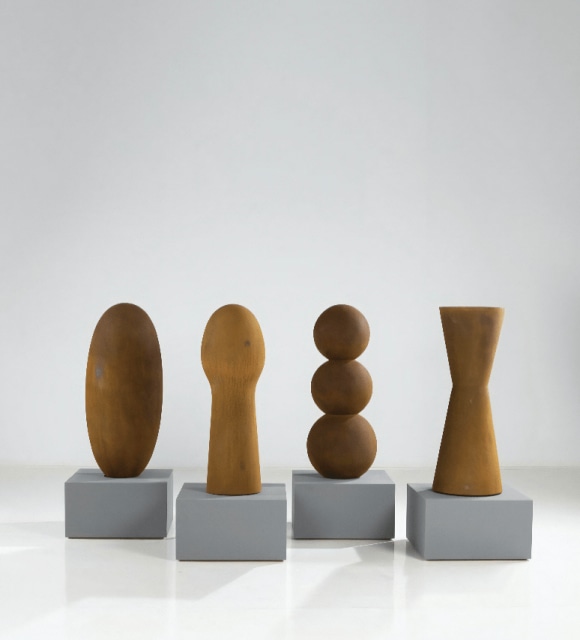Antony Gormley (b. 1950) is one of Britain’s most prominent contemporary sculptors, renowned for his introspective approach to the human form and its spatial relationship to the environment. Through his striking sculptures, Gormley examines themes of existence, embodiment, and collective memory, making the viewer acutely aware of their own presence within a space. His practice fuses personal experience with broader philosophical inquiry, using the body as both subject and object to reflect on the conditions of human life.
Born in London, Gormley studied archaeology, anthropology, and art history at Trinity College, Cambridge, before pursuing formal art training at the Central School of Art, Goldsmiths College, and the Slade School of Fine Art. This interdisciplinary background informs his conceptual approach, grounding his work in a deep understanding of material culture and the human experience.
Central to Gormley’s oeuvre is his use of the body as a site of exploration. He frequently employs his own body as a model for cast-iron or lead sculptures, examining the body’s role as both a vessel of experience and a marker of presence. Works like Event Horizon (2007), where life-sized human figures were installed on buildings across urban landscapes, challenge perceptions of urban space and evoke questions of visibility and anonymity.
Gormley’s monumental Angel of the North (1998) has become one of the UK’s most iconic public sculptures, symbolizing resilience and industrial heritage. Similarly, Another Place (1997), comprising 100 iron figures scattered along the shoreline of Crosby Beach, engages with the natural forces of tide and erosion, underscoring the transient nature of existence.
His recognition includes the Turner Prize (1994) and numerous international accolades. Gormley’s works are held in major collections worldwide, including Tate, the British Museum, and the Museum of Modern Art in New York. Despite his large-scale public commissions, his practice retains a deeply personal and reflective quality, inviting viewers to contemplate their own presence within the physical world.
Beyond sculpture, Gormley is a committed advocate for the role of art in society, emphasizing the transformative potential of creative engagement. His continued explorations into materiality, form, and spatial experience ensure his place as a leading voice in contemporary art.
